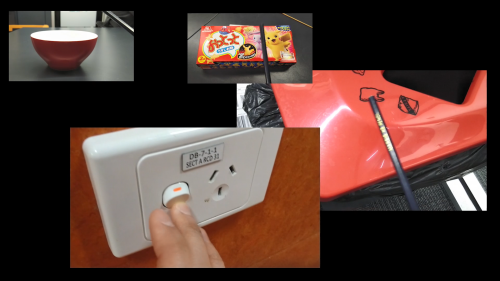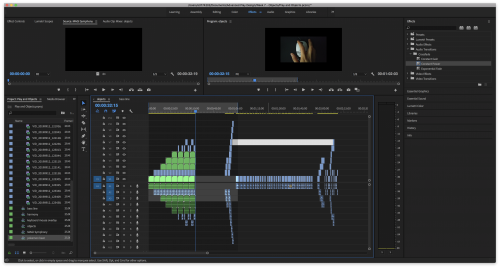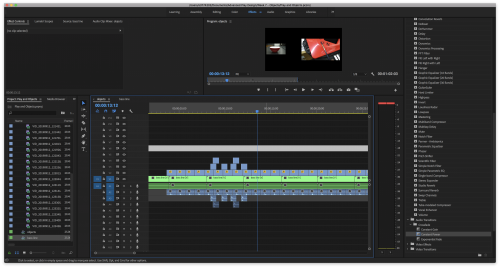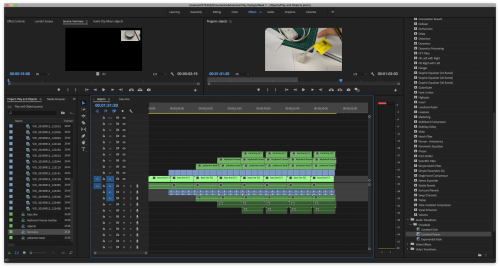Theme: Play & Objects
Context: After Matt showed us a video of the one-man band and how the musician used various objects to play music, it reminded me of the videos I saw where random objects have been used to play music.
One example is The Floppotron, which is a syncronised array of obsolete computer hardware programmed to play tunes. Floppy drives, hard drives and flatbed scanners work in synchrony to create music. In their performance of Seven Nation Army, the Polish engineer Pawel Zadrozniak also uses everyday objects and actions like the pulling of the shower curtain, closing the washing machine, breaking glass and flushing the toilet to create the layers of music to the song.
Another example are the various junkyard orchestra and bands that use recycled materials and discarded objects as instruments to play music. For example, this junkyard orchestra's performance of Despacito uses an Arabic flute made from a broom, a Bolivian guitar fashioned out of a cookie tin and drums made from a bucket and esky. In both cases, objects have been playfully repurposed to create music.
As Huizinga (1949) argues, there are strong linkages between play and music: "Making music bears at the outset all the formal characteristics of play proper: the activity begins and ends within strict limits of time and place, is repeatable, consists essentially in order, rhythm, alternation, transports audience and performers alike out of "ordinary" life". Likewise, Salen and Zimmerman (2004) also describes the act of creating music as a form of play. Looks like I'll be engaging in a bit of performance play (Sutton-Smith 2006) here as I plan to create music from found objects, playfully turning them into musical instruments.
Method: Create music using found objects within the MAGI studio. Take a video of each object being 'played', then edit it in Premiere Pro into a musical track.
Response:
As we only had about an hour this week to work on our APD responses, I limited myself on collecting sounds from objects within and around the MAGI studio only. It was particularly hard to record the videos with sound as both classrooms as well as the communal lunch area had people talking. Luckily Matt let me into the staff room where I was able to cleanly record a few sounds from a selection of random objects. The final response, The MAGI Symphony, had the following objects being played:
- Red bowl in studio 18
- Rubbish bin
- Pokemon snack box
- Powerpoint switch
- Space bar
- Door stopper sandbag
- Computer mouse
- Black bowl in kitchen area
- Glass
- Powerpoint plug
- Door closing
Objects that didn't make the final cut:
- Swipe card access
- Gutter
- Cream wafer tin
- Door handle
- Energy drink can
- Ruler
- Stapler
- Whiteboard cleaning fluid bottle
- Cardboard box
- Takeway box
- Water bottle
- Table leg
Once I collected all the videos, I imported them into Premiere and started tinkering around with the sounds to see what I could come up with. As most of the clips were purely percussive noises with no pitch, in the end I had to edit the bowl sounds (by speeding up or slowing down the clips, which altered the audio pitch) to create some variations in pitch that I could use to form the melody and harmony. Please watch the video to listen to the MAGI Symphony.
Reflection:
At first, I found it quite difficult to find objects that created distinct and pleasant sounds that I could record. I was going around striking objects with a pencil to see if I could capture the sounds, but most came back quite boring and dull. However, once I got into a groove of recording a few objects, the process got easier. It was surprising how many different sounds you can collect when you start seeking them out with persistence. There was also elements of randomness and improvisation as I wasn't sure what kind of sounds I'll get from the MAGI Studio.
I was surprised to have created something from this odd collection of sounds and noises. I wasn't sure if it was going to work out or not. I'm still not 100% happy with the final edit (I was lacking sounds that had a sustained note that could fill in the silences / gaps, and objects that gave more variations in pitch), but with the limited materials and time I had, I thought it demonstrated the idea of creating music from found objects quite successfully.
It was also a playful approach to the use of objects in everyday life. When I was going around the studio searching for objects, I suddenly had to look past its intended use and focused entirely on what sound that object could produce for me. For example, using the rubbish bin as a drum, the powerpoint switch as a clicker, the bowl as a bell-type instrument, or the door stopper as a shaker. When I started layering the sounds together, there were some hilarious and serendipitous moments where two totally unrelated objects actually make a great combo sound together. In hindsight, I felt I could've done more with the way I used each object - I was mainly striking them with a pencil (with a few exceptions), but perhaps I could've gotten a wider range of sounds if I shook or blew into the objects. Argh, next time!
Doing this exercise was also very useful for my studio project, as I'm planning to tweak the concept of Jump Jump Orchestra to be more around a junkyard band (name tentatively changed to Jump Jump Band now). I was essentially testing the concept of creating music from "junk" in real life, and I found this exercise helped me describe the physicality of the sounds I want to my sound designer.
References:
Huizinga, J 1949, Homo Ludens: A Study of the Play-Element in Culture, Routledge & Kegan Paul, London, UK.
Salen, K & Zimmerman, E 2004, Rules of Play: Game Design Fundamentals, MIT Press, London.
Sutton-Smith, B 2006, 'Play & Ambiguity', in K Salen & E Zimmerman (eds), The Game Design Reader: A Rules of Play Anthology, MIT Press, Cambridge, pp. 296-313.
About This Work
By Helen Kwok
Email Helen Kwok
Published On: 12/09/2019
academic:
mediums:
scopes:
tags:
APD, APD Week 7, APDW07, video, premiere





